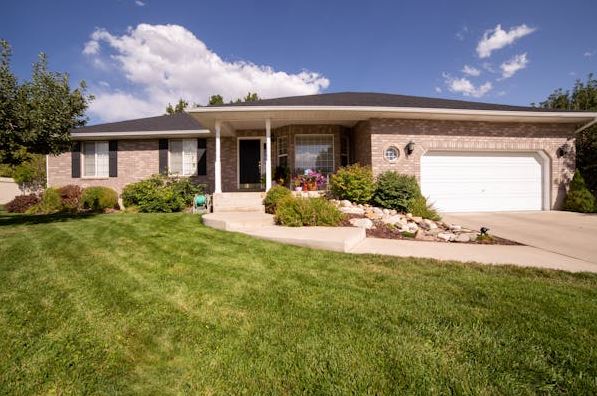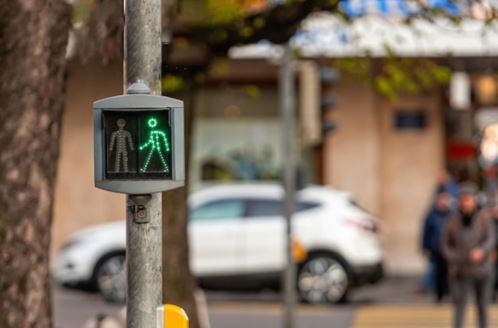Typical Hourly Rates for Eco-Friendly Landscapers in Seattle
Eco-friendly landscaping has gained significant popularity in recent years due to its numerous benefits for both individuals and the environment.
According to The Arbor Day Foundation, there is a profound affinity among Americans for trees enriching our lives, communities, and the planet. A striking 91% of Americans believe it is essential to replant trees that are deforested each year.
Additionally, 9 in 10 people state that trees contribute significantly to their mental well-being. Furthermore, 87% believe planting trees is crucial in combating climate change.
In Seattle, a city renowned for its natural beauty and commitment to sustainability, eco-friendly landscaping practices are becoming increasingly prevalent. By incorporating sustainable principles into their outdoor spaces, residents and businesses can enhance their quality of life.
Average Landscaping Cost
According to Forbes, the average cost for a professionally designed and installed landscape is around $9,000. However, it can range from as little as $2,000 to as much as $50,000.
Smaller projects, such as updating a garden bed or adding a simple patio, tend to be more affordable. In contrast, more elaborate projects, such as redesigning an entire backyard with intricate hardscaping elements, can significantly increase costs.
Labor costs are a significant factor in landscaping projects. Hourly rates for landscaping services in Seattle typically range between $50 and $100 per hour. However, hiring a professional landscaping designer may cost around $150 per hour.
When considering eco-friendly landscaping, it’s important to note that the overall cost per square foot can vary. On average, landscaping projects cost approximately $12 per square foot.
Rutheo Landscapers emphasizes the benefits of using locally adapted and native species in eco-friendly landscaping. These plants create natural habitats for pollinators and wildlife while food-producing plants can enhance your connection to your garden. Careful selection and placement of plants and landscape features contribute to a beautiful and integrated garden that will thrive for years to come.
Furthermore, according to Rutheo Designs, adopting all-electric and organic stewardship practices can reduce noise pollution and promote the vitality of your landscape. By choosing eco-friendly landscaping services, you can enhance the beauty of your property and contribute to a more environmentally friendly Seattle.
Market Demand and Pricing Trends
The increasing demand for eco-friendly landscaping in Seattle is a direct result of the growing trend toward sustainable and environmentally responsible practices. As clients seek landscaping services that align with their values, the market for eco-friendly options has expanded significantly.
According to PR Newswire, the landscaping services market was valued at $267.1 billion in 2023. It is projected to reach $401.4 billion by 2034, growing at a CAGR of 3.8% during this period. This growth is fueled in part by the rising popularity of sustainable practices like xeriscaping and the use of native plants.
According to King5, Seattle City Light provides a compelling example of the demand for eco-friendly landscaping. When faced with the need to clean up contaminated soil around an 80-year-old structure, they opted for an all-natural approach. The resulting pollinator paradise has not only enhanced the neighborhood’s biodiversity but has also created a beautiful and sustainable landscape.
The positive response from neighbors, both human and wildlife, has encouraged Seattle City Light to expand eco-friendly landscaping to other areas of the city. This trend suggests that the market for eco-friendly landscaping services in Seattle is likely to continue growing, potentially affecting pricing trends.
As demand increases, there may be upward pressure on hourly rates for eco-friendly landscapers. However, the competitive landscape and the availability of various service providers can help to mitigate significant price increases.
Types of Services Offered
Eco-friendly landscaping services can vary widely, impacting pricing and the overall scope of work. Some common services include:
- Xeriscaping: This water-conserving approach involves using drought-tolerant plants, efficient irrigation systems, and mulching to create beautiful landscapes that require minimal watering. Xeriscaping can significantly reduce water bills and help conserve resources.
- Green Roof Installation: Green roofs are living roofs covered in vegetation, offering numerous benefits such as stormwater management, energy efficiency, and improved air quality. Installing a green roof can be a substantial investment but can also provide long-term cost savings and environmental benefits.
- Rain Garden Design: Rain gardens are shallow depressions planted with native plants that capture and absorb stormwater runoff, helping to prevent flooding and improve water quality. Designing and installing a rain garden can be a valuable addition to any eco-friendly landscape.
- Sustainable Garden Maintenance: Regular maintenance is essential for maintaining a healthy and vibrant eco-friendly landscape. Sustainable maintenance practices include organic fertilization, natural pest control, and proper pruning techniques.
The specific services you choose will directly influence the cost of your landscaping project. Xeriscaping and rain garden design are generally more affordable options compared to green roof installation, which can be a significant investment. However, the long-term benefits and potential cost savings associated with green roofs should be carefully considered.
Gardening in Seattle’s New Climate
The recent update to the USDA Hardiness Zone Map has significant implications for gardeners in Seattle. The city has moved from Zone 8b to Zone 9a, a shift that places it in the same zone as northern Florida. This change, along with the introduction of two new zones (12 and 13), has caused some confusion among gardeners.
While the zone change may seem sudden, it doesn’t necessarily mean that you need to overhaul your garden. Many plants that have thrived in your yard will likely continue to do well in the new zone. However, if you’re growing plants that are at the edge of your previous zone, they may require extra protection.
The USDA emphasizes that hardiness zones are not guarantees but rather provide a general guideline for average winter low temperatures. With increasingly erratic weather patterns, it’s essential to be prepared for occasional cold snaps that may fall outside of the zone’s average range.
Gardening enthusiasts often enjoy experimenting with “zone denial,” growing plants that are typically considered too tender for their region. While this can be rewarding, such borderline plants may need extra care during cold periods. Consider strategies like positioning them against south-facing walls, mulching the soil, or wrapping them with frost fabric to provide additional protection.
Frequently Asked Questions
What is the landscape in Seattle?
Seattle’s landscape is characterized by its stunning natural beauty, featuring lush greenery, and towering evergreen trees. The city is also known for its waterfront along Puget Sound, vibrant parks, and gardens, making it a picturesque and environmentally rich urban area.
Is Seattle good for gardening?
Yes, Seattle is great for gardening due to its mild, maritime climate, which allows for a diverse range of plants. The region enjoys ample rainfall and a long growing season. These conditions support various gardening styles, including vegetable gardens, flower beds, and native plant landscapes, making it a gardener’s paradise.
Does Seattle have good soil?
Seattle has a mix of soil types, often featuring clay, silt, and sand. While some areas may have well-draining soil, others might require amendments to improve drainage and fertility. Overall, with the right preparation and organic matter, Seattle’s soil can support healthy and productive gardens and landscapes.
When choosing eco-friendly landscaping, evaluate the project’s scope, the landscaper’s expertise, and pricing. Compare multiple quotes to find a reputable company that meets your needs and budget. Embracing eco-friendly landscaping will help Seattle residents contribute to a greener and more sustainable future for themselves and generations to come.





